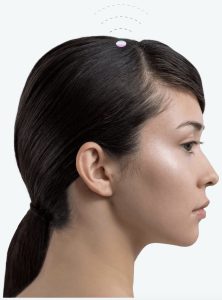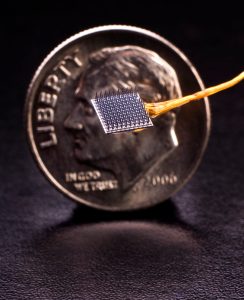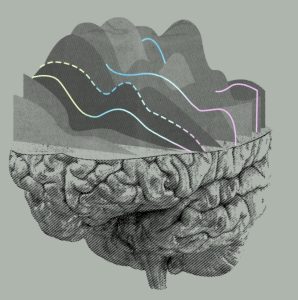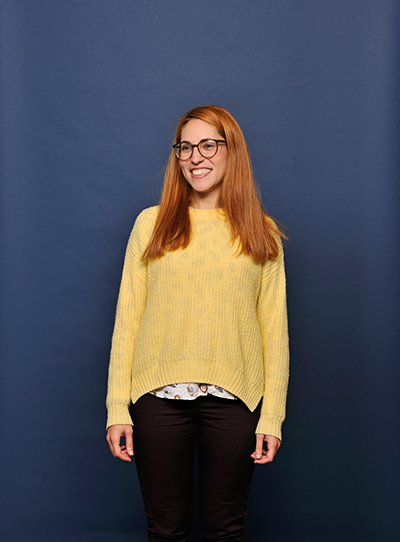Neurotechnology development needs a
multi-disciplinary environment to flourish

A blogpost by Dr. Ir. Vasiliki (Vasso) Giagka, PhD, Assistant Professor of Bioelectronics, Technical University Delft, The Netherlands
“Neurotechnology is defined as the assembly of methods and instruments that enable a direct connection of technical components with the nervous system” [1]

Neurotechnologies usually comprise components that interface directly with tissue, such us electrodes for electrical stimulation or neural recording, LEDs for optogenetics, ultrasound transducers for ultrasound neuromodulation. These are driven by custom-designed, miniaturized electronics who give the system its intelligence. Communication between modules for power and data transfer is usually necessary and can be either wireless or via wired connections. Additional modules, that operate online or offline, run algorithms that allow for automated or user-defined therapy adjustment, and implement safety and security features. All these come together into a single device or, more often, a multi-device system. However, neurotechnologies are much more than this. They require careful consideration, already during the design phase, of how the device will be used by the patient, how often, what is considered user friendly and what not, what is acceptable by the patient and what isn’t. They require careful testing, often during timeframes that are too long to be realistic (decades) and in conditions that are either not fully representative (in a lab) or raise ethical questions (in vivo). Neurotechnologies can be invasive or non-invasive, but even fully implantable systems include external components to give the system some form of programmability. Implantable neurotechnologies, in particular, require very careful consideration of the implantation site and procedure, as well as a clear plan for explantation when the need arises.
The development of neurotechnologies requires, if not mastering, at least being acquainted with, a wide range of scientific disciplines. Usually, electrical engineering is at the core of the hardware development, i.e. for all electronics (analog or digital circuits, and microsystems technology). Specialization in computer science enables software or AI-related developments. Physics and material science are relevant for neural interfaces. Mechanical engineering backgrounds lend themselves to studying the mechanical behaviour of neurotechnologies. Biomedical engineering studies are usually broader, and, given enough expertise, allow a broader overview of the different types of applications. Neuroscience guides the basic understanding and therapy at the research phase, neurosurgery is essential for an effective implantation and explantation technique, while the clinical perspective will guide the translational path.

It is therefore of paramount importance that, neurotechnologists (here I am using this term to cover all STEM disciplines involved in the device development) talk to neuroscientists, neurosurgeons and clinicians to be able to appreciate challenges related to how their developed technology will be used in practice. They need to understand the anatomy, physiology, but also the application scenario, e.g. how a technology will be used, for how long, what is the implantation procedure that will be followed, what type of measurements/indications are being looked at during a surgery, what is the expected body reaction to the implantation process. In addition, for clinical translation, how the patient is experiencing living with the assistive technology, how user-friendly it is made, what is its desired versus expected lifetime, are all aspects that should not be overlooked.

This dialogue, however, often proves to be more challenging than expected. Engineers and clinicians often learn to speak different languages; engineering is a more deterministic world; take as an example the design of a neural interface for the peripheral nerves: when the length of an implant is designed to be 6 millimetres, it will be always 6 millimetres +/- some micrometres. If we make hundreds of these, all will have very similar characteristics. We can make transistors with features that are as small as tens of micrometers, with a deviation in the nanometer range. We can work (measure or generate) signals in the GHz or even THz range (that is nanoseconds or picoseconds), with extreme accuracy. Body time constants, on the other hand, are far below this, usually in the hundreds of microseconds or milliseconds range. The length of a “6-millimetre long” nerve (the same nerve) can, in fact, be anywhere between 3 to 9 millimetres, varying among individuals. The diameter of a nerve can vary widely among individuals as well. I have often found that this difference in perception creates miscommunication and misunderstandings, even though two committed scientists are trying to effectively convey their message to the other side, what the other side is in fact receiving is something else; this message will be interpreted or seen via their own lenses, filtered through their way of thinking.
For all these disciplines to work together constructively and effectively, we must create environments and possibilities for the different disciplines to get exposed to the other side. Not only by talking, but by doing. By participating in a lab experiment, or following a day’s/week’s long work. In some industries this is done by what is called shadowing: a new colleague gets a glimpse of different roles in the company by being the “shadow” of a more experienced worker in another domain. This helps exposing the unspoken reality, helps the shadow appreciate the challenges the other side is facing, appreciate their daily rhythm, what is important or priority for them. In this way the shadow becomes a more competent communicator, thereby unleashing the potential of this collaboration.
We can learn from this approach. We must educate newer generations of neurotechnologists in a multi-disciplinary environment, but with enough focus on the core discipline. Only after having acquired enough depth and focus on one’s more traditional discipline should we then broaden up, reach out to other disciplines and start this constructive discussion, always remaining loyal to our original discipline. In such a setting, relevant disciplines will be influenced by each other, leading to a constructive dialog, a fruitful environment where neurotechnology will flourish.
For all these disciplines to work together constructively and effectively, we must create environments and possibilities for the different disciplines to get exposed to the other side. Not only by talking, but by doing.
Last but not least, all neurotechnologists should be educated regarding neuroethics. How sensitive data that are being retrieved from our bodies are being handled, who owns these, how they are being processed and stored, for how long, who can access these, are all very relevant and important questions that raise big ethical issues and need to be thoroughly discussed as neurotechnologies become more and more common and advanced.
Biography
Vasiliki (Vasso) Giagka (PhD) is Assistant Professor of Bioelectronics at the Technical University Delft (TU Delft), The Netherlands and group leader at Fraunhofer Institute for Reliability and Microintegration IZM, Berlin, Germany.
Dr. Giagka was born in Athens, Greece, in 1984. She received the M.Eng. degree in electronic and computer engineering from Aristotle University of Thessaloniki, Thessaloniki, Greece, in 2009. She then moved to London to join the Analogue and Biomedical Electronics Group at University College London, UK from where she received the PhD degree in 2014. In 2015 she joined the Implanted Devices Group at University College London, UK, as a research associate.
She currently, since September 2015, holds an assistant professor position at the Bioelectronics Group at Delft University of Technology, Delft, The Netherlands, and since September 2018 she is also leading the group Technologies for Bioelectronics, at Fraunhofer Institute for Reliability and Microintegration IZM, Berlin, Germany. Between her two affiliations, she is carrying out research on the design and fabrication of active neural interfaces. In particular, she is investigating new approaches for neural stimulation and wireless power transfer, as well as, implant miniaturization, microsystem integration, packaging and encapsulation to meet the challenges of bioelectronic medicines.
References
- Müller O, Rotter S. Neurotechnology: Current Developments and Ethical Issues. Front Syst Neurosci. 2017;11

